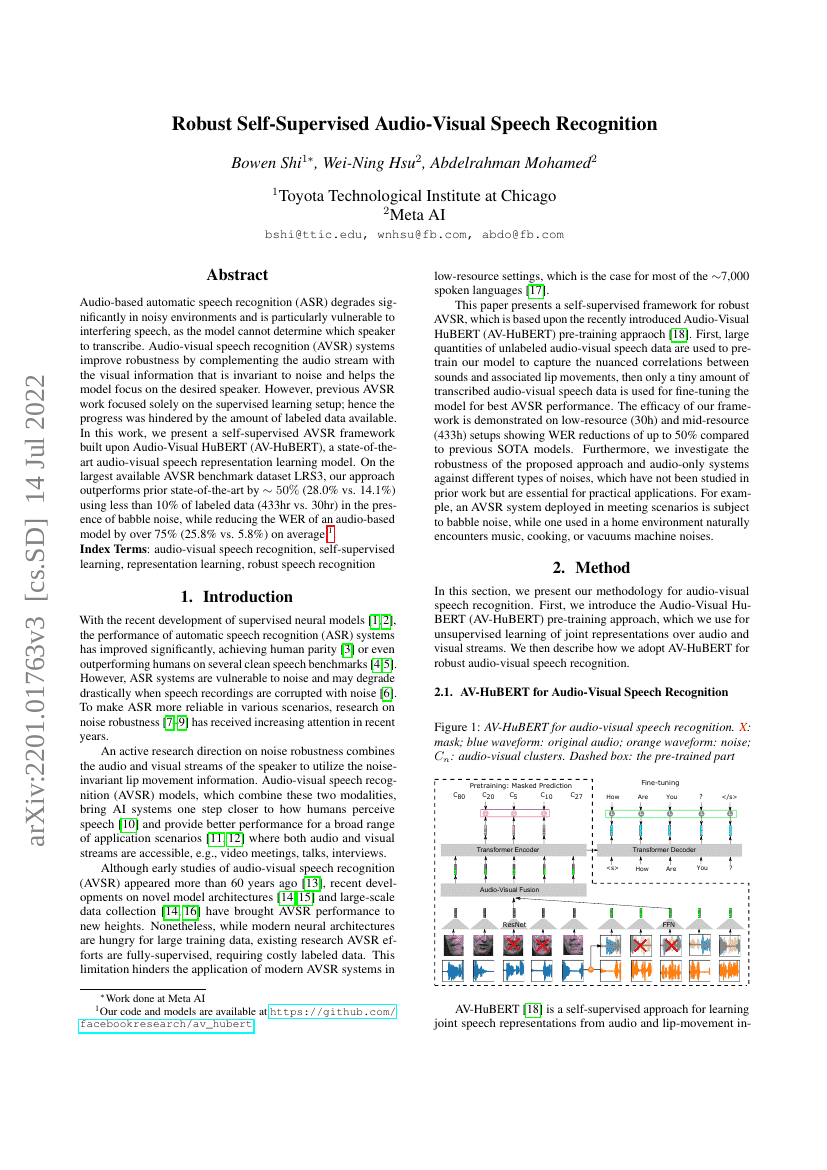Command Palette
Search for a command to run...
Shi Bowen ; Hsu Wei-Ning ; Mohamed Abdelrahman

Abstract
Audio-based automatic speech recognition (ASR) degrades significantly innoisy environments and is particularly vulnerable to interfering speech, as themodel cannot determine which speaker to transcribe. Audio-visual speechrecognition (AVSR) systems improve robustness by complementing the audio streamwith the visual information that is invariant to noise and helps the modelfocus on the desired speaker. However, previous AVSR work focused solely on thesupervised learning setup; hence the progress was hindered by the amount oflabeled data available. In this work, we present a self-supervised AVSRframework built upon Audio-Visual HuBERT (AV-HuBERT), a state-of-the-artaudio-visual speech representation learning model. On the largest availableAVSR benchmark dataset LRS3, our approach outperforms prior state-of-the-art by~50% (28.0% vs. 14.1%) using less than 10% of labeled data (433hr vs. 30hr) inthe presence of babble noise, while reducing the WER of an audio-based model byover 75% (25.8% vs. 5.8%) on average.
Code Repositories
Benchmarks
| Benchmark | Methodology | Metrics |
|---|---|---|
| audio-visual-speech-recognition-on-lrs3-ted | AV-HuBERT Large | Word Error Rate (WER): 1.4 |
Build AI with AI
From idea to launch — accelerate your AI development with free AI co-coding, out-of-the-box environment and best price of GPUs.